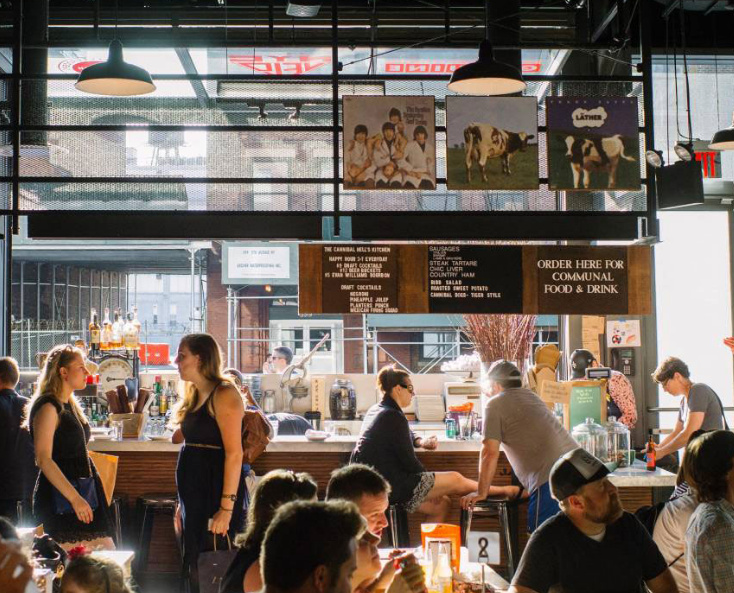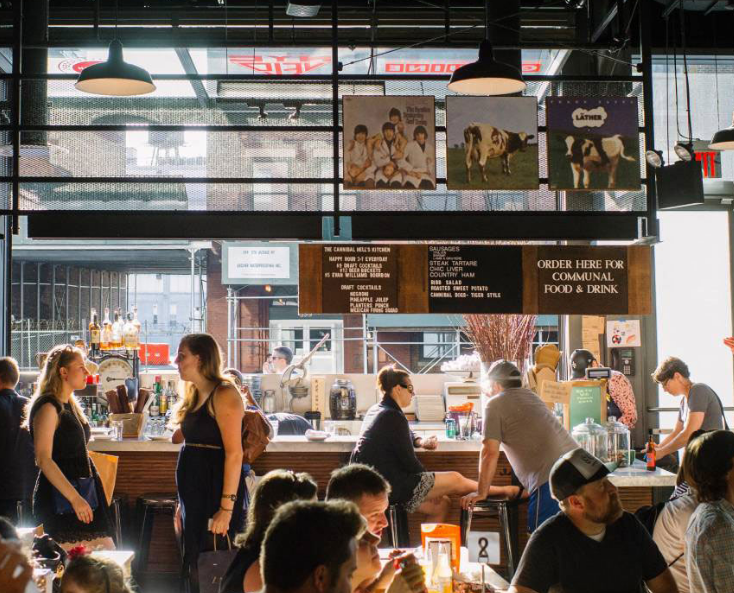
Unique is a word commonly misused in our culture, but it is correctly applied when referring to Diane Oberhelman. After working in real estate for just seven years, she founded Cullinan Properties in 1988 and remains one of the few female chief executives in retail real estate. What’s more, her company has always developed office and residential properties in addition to retail, ideally positioning it to develop live-work-play centers. Oberhelman has set the bar high with projects such as the Streets of St. Charles and The Levee District in East Peoria, so we asked her to share some of her tenets of mixed-use development.
How did Cullinan Properties get started in mixed-use?
In the mid-Nineties, we developed Harbor Pointe and Eastport Plaza in East Peoria — a mixture of townhome condominiums, offices, retail, and a 580-slip marina. At about the same time, we developed Weaver Ridge Golf Club in Peoria — an upscale golf club and housing community. Grand Prairie Developments in Peoria really placed Cullinan Properties on the national map. While the project was primarily retail-driven, we established the highest apartment rental rates in the market due to the synergies of having entertainment, fitness options, restaurants, and shops all within walking distance. Now you can’t build a successful shopping center without some multi-family options.
Describe the ideal mixed-use center.
The center should provide a good mix of any number of elements that could include, but not be limited to, retail shopping, dining options, entertainment, residential living, and offices. The possibilities for tenant types at mixed-use projects can be truly limitless, and developers need to get creative. Grocery stores, medical, offices, civic uses, and new forms of entertainment can all be welcome additions. But just as important is the walkability of the property and aesthetically appealing landscaping and gathering spaces. Events are also critical to the success of mixed-use centers. Events introduce the property to new guests and provide our tenants with opportunities to market themselves. Our success as a landlord is tied to the successes of our tenants.
Give us an idea of the time and effort that goes into creating something like the Streets of St. Charles.
It can be very complicated, yes. Understanding what the market will bear, knowing the needs of a community’s residents, and obtaining support from local, state, and federal officials is critical. Much of the master plan for Streets of St. Charles had been realized since 2007, when it first went into planning stages. To date, the 26-acre project consists of 309 multi-family apartment units, two hotels, office buildings, a movie theater, more than a dozen restaurants, and multiple local and national retail shops and services. However, there needs to be a degree of flexibility to change as the market changes and the project nears completion. It’s essential to be able to adapt to shifts in multi-family housing needs and retail climate changes.
Where do you start? With the need for residential? The opportunity for retail? The rejuvenation of a promising neighborhood?
Those are all good places to start. Developers need to understand the market demands and look for ways to tie in multiple mixed-use elements to offer consumers a property that is a “place maker.” Whether it’s a project that enables consumers to live, work, and play, or a project that offers conveniences for those who live on site or work on site — those desired elements need to be top of mind when planning.
What do you find to be a good mix of local and national brand retailers in these centers?
It varies by development. Larger, national names can act as an initial draw to attract consumers to the property, while the smaller, local businesses may be what keep them coming back time and again. Locally owned businesses are the lifeblood of our communities, and can be a terrific complement to a mixed-use project. The retail market is indeed evolving, and so to keep up with consumers’ demands for richer experiences when shopping brick and mortar, national retailers are going to need to create those unique experiences for their shoppers in brick and mortar stores.
Why should retailers want to have a presence mixed-use centers?
Physical retail is critical to so many retailers, including online sellers. A retail brand can be heavily influenced by the property in which it locates. Retailers that covet a premium brand identity need to be in dynamic, mixed-use developments since these are thriving properties. The energy generated by a great mixed-use property benefits the retailers as the shoppers are engaged and inspired by their environment. And sales at our mixed-use properties tend to be well ahead of national store averages.
Diane Cullinan Oberhelman is chairman and founding partner of Cullinan Properties, Ltd, based in Peoria, Ill.

